The Structure of the Drum
[Experiment2]Opening a hole in the bottom head of a tom-tom
Performing a sound experiment
Sometimes a hole is created in the head to change the tone of a drum. So, we made several different holes in the bottom head of a tom-tom and compared their tones.
Experiment steps
- We obtained a 14 inch (35.5 centimeter) tom-tom.
- We made two round paper patterns-one with a diameter of 10.5 centimeters and the other 21 centimeters.
- We used the patterns to cut holes in the bottom head of the tom-tom and compared the sound of the drum with these holes of different sizes.

Results of the experiment
Without a hole (standard)
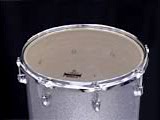
A 10.5 centimeter diameter hole in the center
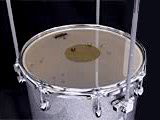
A 10.5 centimeter diameter hole near the edge
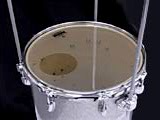
A 21-centimeter diameter hole in the center
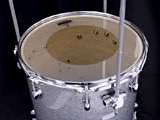
No bottom head
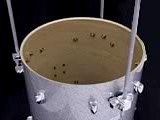
*As this was an experiment, the recorded pitches differed from the correct notes.
The holes were cut by turning the drum upside-down and cutting a hole in the bottom head using a box cutter. The film was quite thick and resistant to cutting.
With a 10.5-centimeter diameter hole cut in the center, the tone of the drum was a bit brighter and lighter than before. Then we widened the diameter of the hole to 21 centimeters, which gave it a deeper, more resonant tone. Last, we removed the head and the hoop completely, and it sounded as if the sound from the drum was rebounding off of the floor.
Changing the position of the hole from the center to the side of the drum caused the tone to change completely, making it much lower.
The bright tone created by the 10-centimeter hole in the middle was a result of the air escaping from the middle of the shell via the center of the bottom head, making it difficult for the bottom head to vibrate at its resonant frequency, and preventing the lowest tones from ringing. Increasing the hole to 21 centimeters minimized the effect of the bottom head and approached a fully open aperture, which lowered the resonant frequency of the drum and created a much lower tone. Shifting the location of the hole to the edge of the drum divided the head and made it more difficult for vibration at the higher natural frequencies to occur, thus bringing out the relatively lower tones. This is why the tones were lower than when the hole was in the center.
For this reason, the hole on a bass drum is often located on a different axis, around the four or five o'clock position, from the foot pedal.
